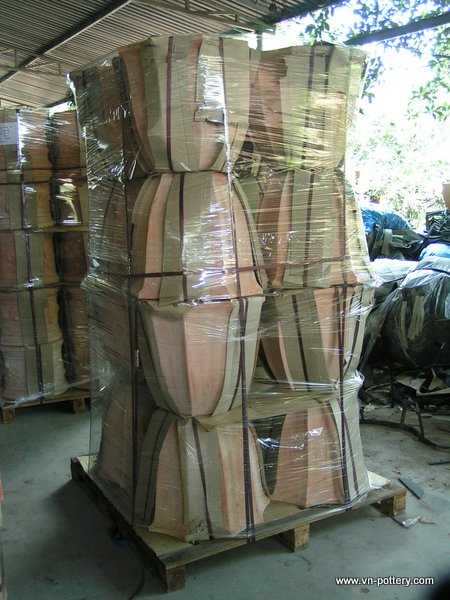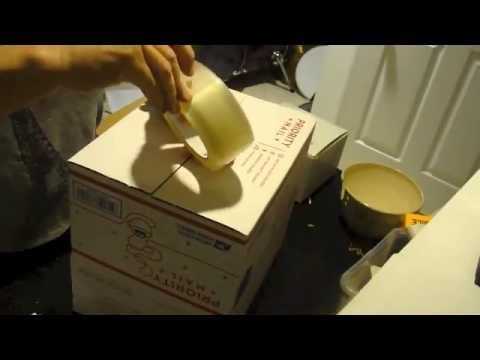When it comes to shipping pottery and ceramics, it’s crucial to take extra precautions to ensure that these fragile items arrive at their destination in one piece. Whether you’re sending a delicate vase or a handcrafted ceramic sculpture, proper packing techniques can make all the difference in protecting your precious pieces. In this article, we will explore the essential tips and techniques for packing pottery and ceramics for safe shipping.
One of the first steps in packing pottery and ceramics is to choose the right materials. It’s important to have sturdy boxes that are strong enough to support the weight and fragile nature of these items. Additionally, you’ll need plenty of bubble wrap, packing peanuts, and packing paper to provide cushioning and protection. Strong tape and labels for marking the boxes are also essential.
Next, it’s important to properly wrap and cushion each piece to avoid any potential damage during transportation. Start by wrapping the pottery or ceramic item in several layers of bubble wrap. Pay extra attention to delicate areas, such as handles or spouts, by providing additional padding. Use packing peanuts or crumpled packing paper to fill any empty spaces in the box to prevent movement and ensure that the item stays in place.
Pro tip: If shipping multiple pottery or ceramic items, wrap each piece individually and separate them with layers of bubble wrap or cardboard dividers. This will prevent them from knocking into each other during transit.
Finally, securely seal the box with strong tape and label it as fragile. It’s also recommended to include a note indicating that the package contains delicate pottery or ceramics, so that handlers take extra care when moving it. This will help reduce the risk of mishandling during the shipping process.
In conclusion, packing pottery and ceramics for safe shipping requires attention to detail and the use of proper materials. By following these essential tips and techniques, you can ensure that your delicate pieces arrive at their destination intact and ready to be enjoyed.
Choosing the Right Packaging Materials
When it comes to packing pottery and ceramics for safe shipping, choosing the right packaging materials is crucial. The delicate nature of these items requires materials that can provide adequate protection during transit.
1. Bubble Wrap:
Bubble wrap is an essential packaging material for pottery and ceramics. Its cushioning effect helps absorb shocks and protects fragile items from breakage. Wrap each piece individually with several layers of bubble wrap, paying extra attention to the delicate areas.
2. Packing Peanuts:
Packing peanuts are another popular choice for protecting pottery and ceramics. Use these lightweight, foam-based peanuts to fill empty spaces in the box and provide additional cushioning. Make sure to pack the box tightly to prevent any movement during transit.
3. Foam Sheets:
Foam sheets are ideal for protecting flat surfaces of pottery and ceramics. Place foam sheets in between each item or layer to prevent scratching. The foam acts as a barrier and absorbs any impact, reducing the risk of damage.
4. Cardboard:
Using cardboard boxes specifically designed for shipping fragile items is highly recommended. These boxes are usually double or triple-walled, providing extra sturdiness and protection. Ensure the box is the right size for the item and use additional layers of cardboard for added reinforcement.
5. Tape:
High-quality packing tape is essential for securing the packaging. Use a strong and durable tape that can withstand the stress and strain of shipping. Seal all edges and seams of the box to prevent it from opening during transit.
6. Fragile Labels:
Don’t forget to label the package as “fragile” to alert handlers to handle it with care. Attach these labels on all sides of the box to ensure maximum visibility.
Remember, selecting the right packaging materials is crucial for the safe transport of pottery and ceramics. By using appropriate materials, you can minimize the risk of damage and ensure your items arrive at their destination in pristine condition.
Preparing the Pottery or Ceramics
Before packing your pottery or ceramics for shipping, it is important to properly prepare them to ensure their safe arrival. The following steps can help you prepare your items for shipping:
- Clean the items: Ensure that the pottery or ceramics are clean before packing them. Remove any dust or debris using a soft brush or cloth.
- Check for damage: Inspect the items for any existing damages, such as cracks or chips. It’s important to note these damages before packing to determine if any additional precautions are needed.
- Wrap fragile pieces individually: For fragile items or pieces with intricate details, wrap them individually in acid-free tissue paper or bubble wrap. This will help protect them from scratches and provide cushioning during transit.
- Secure lids and handles: If the pottery or ceramics have lids or handles, make sure they are securely attached or wrapped to prevent them from getting damaged or separated during shipping.
- Use proper padding: Line the shipping box with layers of bubble wrap, packing peanuts, or foam to provide cushioning and prevent movement of the items inside the box.
- Separate items: If shipping multiple pieces, separate them using cardboard dividers or foam to prevent them from touching each other and potentially getting damaged.
- Label fragile: Clearly label the shipping box as “fragile” to alert the shipping carrier to handle the package with care.
By following these steps and taking the necessary precautions, you can ensure that your pottery or ceramics arrive safely at their destination.
Wrapping and Cushioning
To ensure the safe shipping of pottery and ceramics, proper wrapping and cushioning techniques are essential. The following tips will help protect your fragile items during transit:
- Start with bubble wrap: Place a layer of bubble wrap on a clean surface and gently wrap the ceramic or pottery item, securing it with tape. Ensure that all sides are well-covered to provide maximum protection.
- Use foam or packing peanuts: For added cushioning, line the bottom of the shipping box with foam or packing peanuts. This will help absorb any impact during transit and prevent movement inside the box.
- Wrap with cardboard: If your pottery or ceramics have delicate handles or protruding parts, protect them further by wrapping them with additional layers of cardboard. Cut pieces of cardboard to fit around the fragile areas and secure them with tape.
- Separate and layer: To prevent any potential damage from items rubbing against each other, separate each wrapped piece with foam or cardboard. Layer them in the shipping box, making sure there is enough cushioning between each item.
- Fill empty spaces: Fill any empty spaces in the box with packing material, such as foam or bubble wrap, to prevent movement and provide further protection. This will help distribute the impact during transit and reduce the risk of breakage.
- Label fragile: Clearly mark the package as “fragile” to let the shipping carrier know that special care is required during handling. This will increase the chances of your pottery or ceramics being handled with extra caution.
- Choose the right box: Select a sturdy shipping box that is appropriate for the size and weight of your pottery or ceramics. Reinforce the box with additional tape if needed to ensure it can withstand the rigors of transit.
By following these wrapping and cushioning techniques, you can greatly reduce the risk of damage to your pottery and ceramics during shipping. Remember to double-check that everything is securely wrapped and padded before sealing the box for transit.
Choosing the Right Box
Packing pottery and ceramics requires careful consideration of the box used for shipping. The right box can help protect your delicate items and ensure they arrive safely at their destination. Here are some essential tips for choosing the right box:
- Size: Select a box that is slightly larger than the item you are packing. This will allow for some padding and extra space for protective materials.
- Sturdiness: Opt for a box that is made of strong and durable materials, such as corrugated cardboard. Avoid using flimsy or damaged boxes that may easily collapse or tear during transit.
- Double Boxing: Consider double boxing for added protection. This involves placing the packed item in a smaller box and then placing that box inside a larger box with packing materials in between. This provides an extra layer of cushioning.
- Weight Capacity: Check the weight capacity of the box to ensure it can support the weight of your pottery or ceramics. Exceeding the weight capacity can lead to box failure and damage to your items.
- Reinforcement: If necessary, reinforce the box with additional tape or packing straps to prevent it from opening during transit.
- Labels: Clearly label the box as fragile and indicate which side should be kept upright. This will help ensure that it is handled with care during shipping.
Remember, choosing the right box is an important step in packing pottery and ceramics for safe shipping. Taking the time to select a suitable box can help protect your delicate items and give you peace of mind when shipping them.
Sealing and Labeling
Proper sealing and labeling of your pottery and ceramics is crucial to ensure its safe transportation and delivery. Here are some essential tips and techniques to follow:
- Secure Packaging: Start by securing your pottery and ceramics with bubble wrap, foam, or other protective materials. Make sure all fragile parts are adequately covered to prevent any potential damage during shipping.
- Use Sealing Tape: Once your items are securely wrapped, use sealing tape to seal all edges and openings to prevent the packaging from coming loose during transit. This will help to keep your pottery and ceramics in place and reduce the risk of breakage.
- Label Fragile: Clearly label your package as “Fragile” or “Handle with Care” to alert the shipping company and handlers about the delicate nature of the contents. This will help ensure that your package receives the necessary attention and care during transportation.
- Include Handling Instructions: Consider including handling instructions on or inside the package, especially if your pottery or ceramics have specific requirements for safe handling. This will provide additional guidance to the shipping company and handlers on how to handle your items properly.
- Attach Return Address Label: Always include a return address label on the package to ensure that it can be returned to you if there are any delivery issues.
- Document and Photograph: It is a good idea to document and photograph your pottery and ceramics before packaging them. This can serve as evidence of the item’s condition before shipping in case any damage occurs during transit.
- Insurance: Consider purchasing shipping insurance to protect the value of your pottery and ceramics in case of any loss or damage during shipping.
By following these sealing and labeling tips, you can help ensure that your pottery and ceramics arrive safely at their destination, ready to be enjoyed by their new owners.
Shipping Methods and Carriers
When it comes to shipping pottery and ceramics, choosing the right shipping method and carrier is crucial to ensure the safe arrival of your fragile items. Here are some essential tips to consider:
- Parcel Shipping: This is a common method for shipping small and medium-sized pottery and ceramics. It involves packaging the item securely in a box with appropriate cushioning materials and then sending it through a parcel carrier such as UPS, FedEx, or DHL.
- Freight Shipping: For larger and heavier pottery and ceramics, freight shipping may be necessary. This method involves using a freight carrier that specializes in transporting oversized and heavy items. Freight shipping usually requires palletizing the items and securing them with stretch wrap or straps.
- Insurance: Regardless of the shipping method chosen, it is essential to insure your pottery and ceramics against damage or loss. Most carriers offer insurance options that cover the declared value of the items being shipped. Make sure to accurately assess the value of your items and choose the appropriate coverage.
When selecting a carrier for your pottery and ceramics, consider the following factors:
- Experience: Look for carriers that have experience in handling fragile items like pottery and ceramics. They should have a track record of successful deliveries and positive customer reviews.
- Packaging Requirements: Different carriers may have specific packaging requirements for fragile items. Make sure to comply with these requirements to ensure that your package is accepted and covered by insurance.
- Tracking and Delivery Confirmation: Choose a carrier that provides tracking services and delivery confirmation. This allows you to monitor the progress of your shipment and ensure that it has been safely delivered to the recipient.
- Cost: Compare the shipping costs of different carriers to find the most affordable option that still meets your packaging and delivery requirements.
By carefully considering the shipping method and carrier for your pottery and ceramics, you can increase the chances of a successful and safe delivery. Remember to package your items securely and label them as fragile to alert handlers to handle them with care.
Insurance and Tracking
When packing and shipping pottery and ceramics, it is crucial to consider insurance and tracking options to ensure the safety and security of your valuable items. Insurance provides protection against loss or damage during transit, while tracking allows you to monitor the progress of your shipment.
Insurance:
Before shipping your pottery or ceramics, it is highly recommended to purchase shipping insurance. Insurance coverage protects your items in case they get lost, stolen, or damaged during transportation. The cost of insurance is typically a percentage of the declared value of your shipment, and it offers peace of mind by providing compensation in case of any unfortunate incidents.
Prior to purchasing insurance, it is essential to properly assess the value of your pottery and ceramics. This can be done by getting an appraisal or consulting with an expert. Once you have a valuation in mind, you can choose an insurance plan that offers adequate coverage.
Tracking:
Tracking your shipment is crucial as it allows you to monitor the location and progress of your pottery and ceramics. Most shipping carriers offer tracking services that provide real-time updates on the status of your shipment.
When purchasing a shipping label, make sure to opt for a service that provides tracking. This will usually come at an additional cost, but it is well worth it for the added convenience and peace of mind. Once you have your tracking number, you can easily track your shipment online through the carrier’s website or mobile app.
Conclusion:
Insurance and tracking are essential components of shipping pottery and ceramics. By investing in insurance coverage, you can protect your valuable items against potential loss or damage. Additionally, tracking allows you to stay informed about the progress of your shipment, giving you peace of mind throughout the shipping process.
FAQ:
How should I pack pottery for shipping?
Packing pottery for shipping requires careful handling and proper materials. Start by wrapping each piece of pottery individually with tissue paper or bubble wrap. Place the wrapped pottery in a sturdy box, filling any gaps with packing peanuts or extra padding. Make sure to secure the box with strong tape and label it as fragile.
What materials should I use to pack ceramic items?
To pack ceramic items, you should use materials such as tissue paper, bubble wrap, packing peanuts, and sturdy boxes. These materials will provide adequate cushioning and protection during shipping. It is important to avoid using newspaper or thin materials that may not provide enough support.
Is it necessary to double box fragile pottery?
Yes, it is highly recommended to double box fragile pottery for added protection during shipping. This involves placing the individually wrapped pottery in one box and then placing that box inside a larger box with additional padding. The double boxing method helps to minimize the risk of damage caused by impacts and vibrations during transit.
Can I use newspaper as packing material for pottery?
It is not recommended to use newspaper as packing material for pottery. Newspaper may not provide enough cushioning and it can leave ink stains on the ceramic surface. It is better to use proper packing materials such as tissue paper, bubble wrap, or packing peanuts to ensure the safe transportation of pottery.


